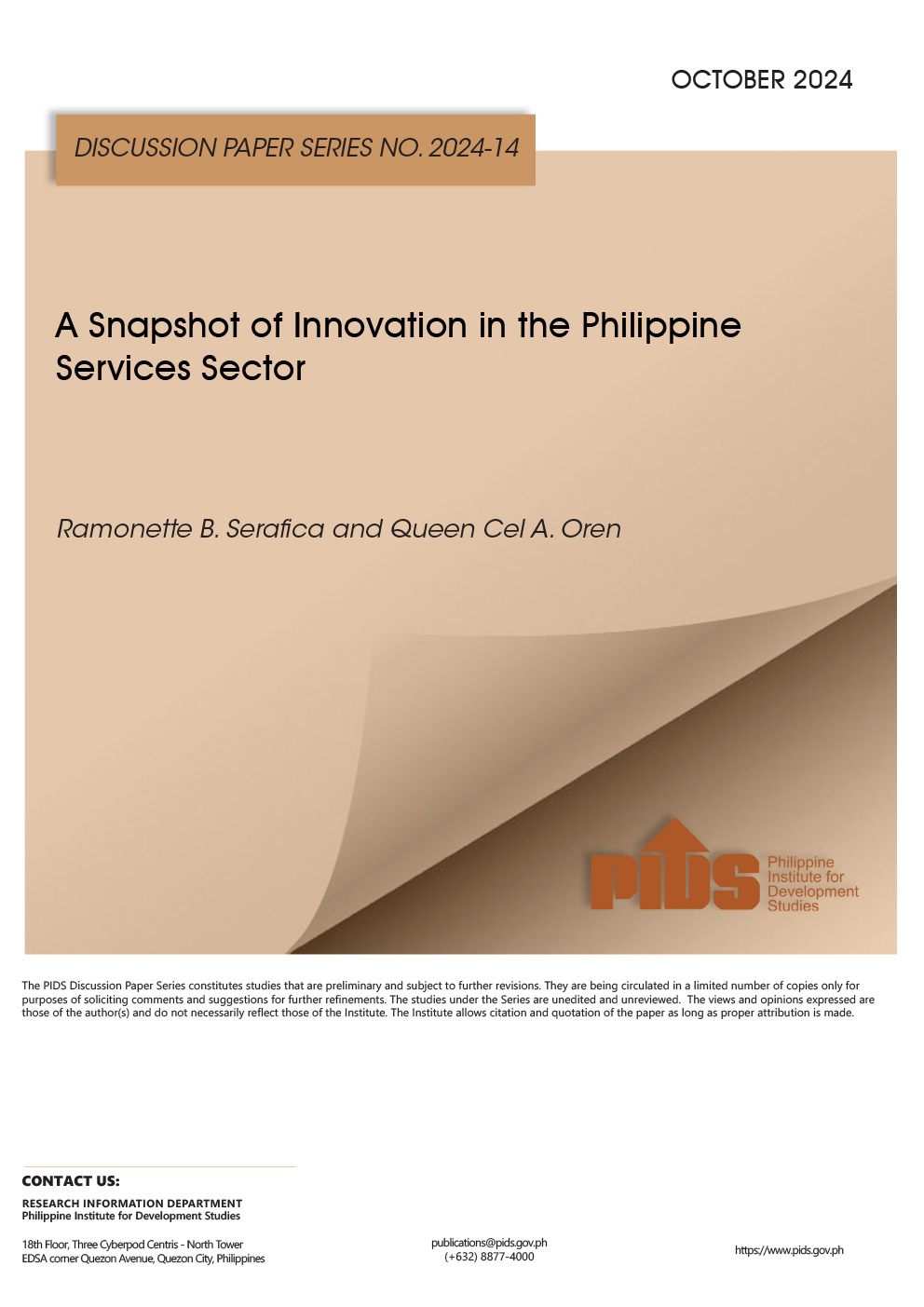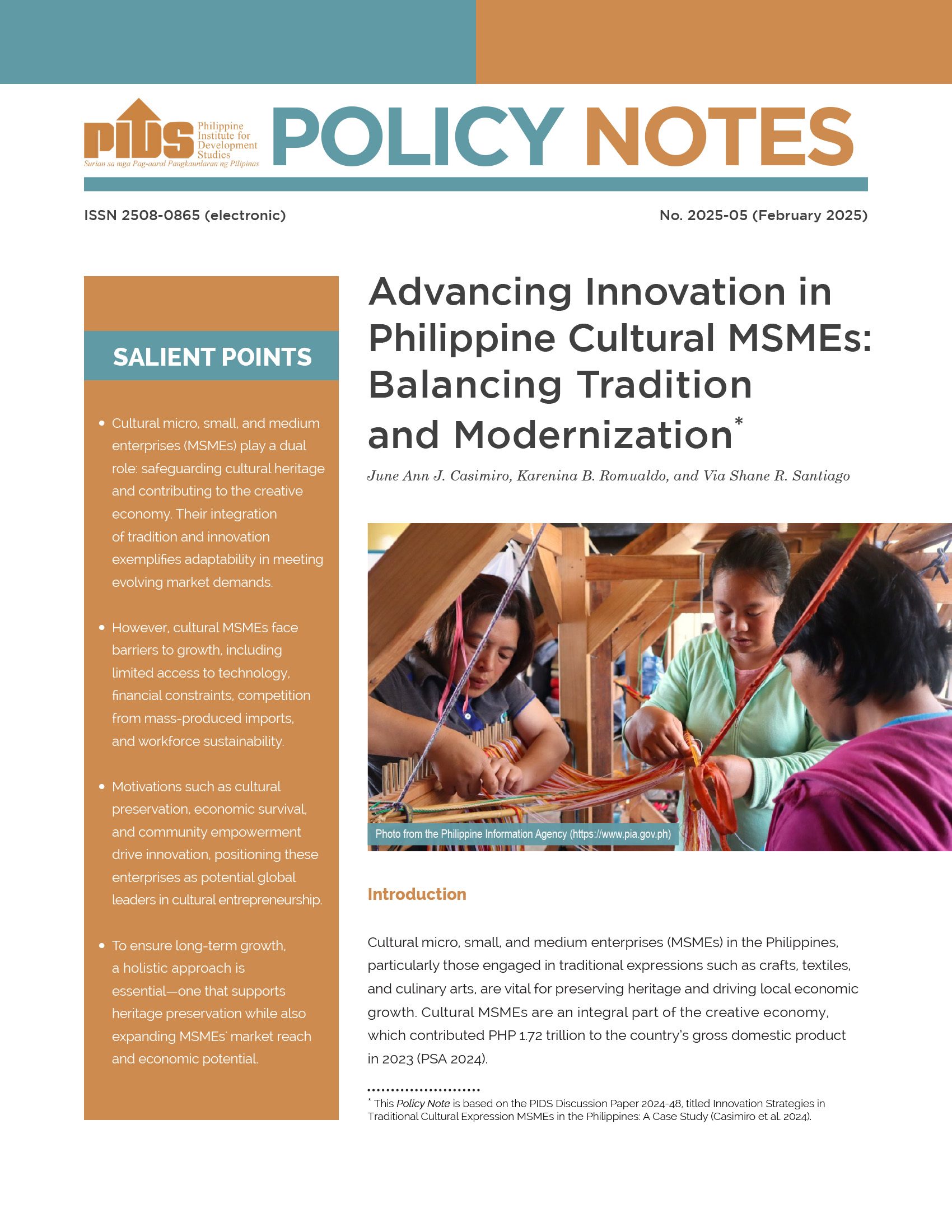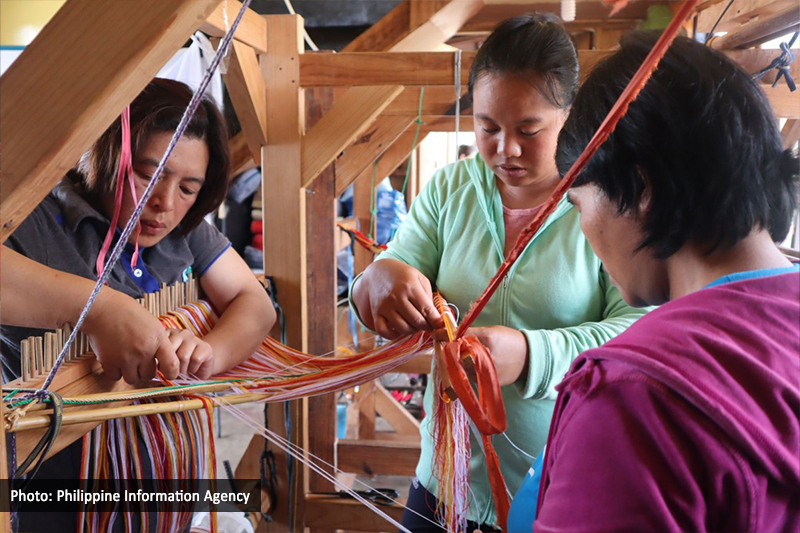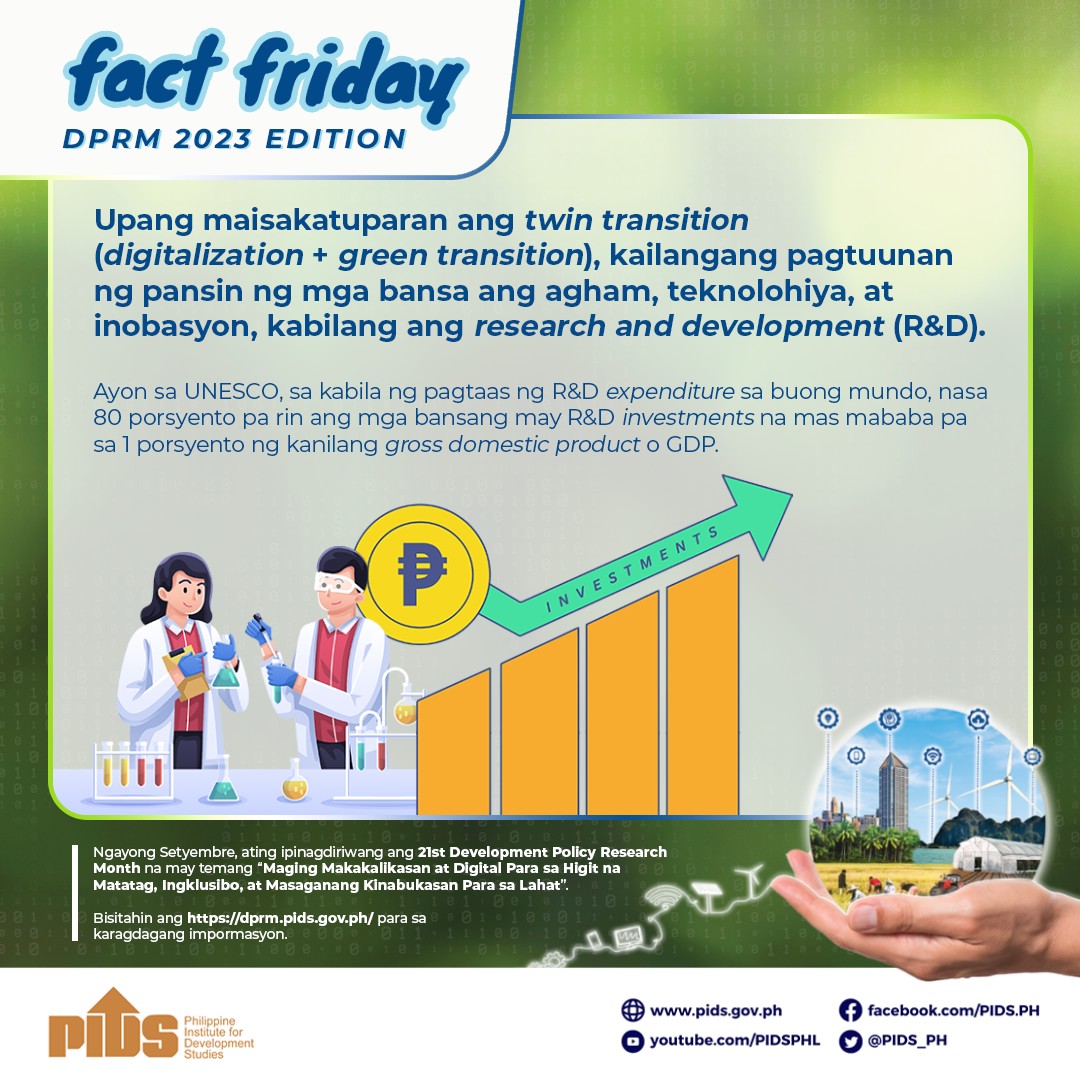
In a world where everything is fast-paced because of advancement brought by technology, companies have to think about different ways to cope up. Fortunately, it doesn’t always have to be costly.
While research and development (R&D) is crucial in maintaining competitiveness in the industry and sustaining economic growth, not all technological innovations are born out of it, according to a study published by state think thank Philippine Institute for Development Studies (PIDS).
A discussion paper by Fatima Lourdes E. del Prado and Maureen Ane D. Rosellon, former research specialist and supervising research specialist at PIDS, respectively, showed that firms in developing countries like the Philippines, which do not have enough resources to maintain R&D, can still innovate even without a unit that handles it.
In the Philippines, for example, little importance is given to R&D and there is also a shortage of skilled people who are experts in this field. In the past years, while it was established that the Philippines produced the biggest numbers of college graduates, science and engineering graduates comprised only a small portion of the population, resulting to a weak research culture in the country.
The good news is that new studies show that the Philippines is finally catching up. A study by the United States Agency for International Development in 2014 found that the quality of science, technology, engineering, and mathematics- (STEM-) related training in the country is already at par with international standards. The country’s STEM graduates have also increased, and have even exceeded local demands.
For the study, del Prado and Rosellon interviewed three garment firms in the Philippines to show how these companies, especially in the low-technology sector, innovate without a formal R&D section.
The researchers cited Arundel et al. (2008), saying that there are four methods that firms can use for innovation—technology adoption; minor modifications or incremental changes to products and processes (including use of engineering knowledge); imitation including reverse engineering; and combining existing knowledge in new ways.
Technology adoption refers to the acquisition of innovative products and processes outside the firm, as well as the purchase of new machinery and equipment. Minor modifications, on the other hand, implies that continuous practice with minor innovations may lead to productivity improvements.
Meanwhile, imitation pertains to replication of processes and products that is commonly practiced in the market today. The fourth method means combining knowledge, technical skills, and cumulative learning processes to be able to create a new product.
The PIDS study, citing Arundel et al., noted that low- to medium-tech firms are more likely to adapt modification and incremental changes to products and processes, and application of tacit knowledge.
Based on their interviews, del Prado and Rosellon observed that the firms have innovated by upgrading their production processes to keep up with the product style and standards of customers. They are also deeply involved in the production process by providing and sharing their own ideas to develop the product.
Furthermore, they conclude that firms can upgrade their products and processes even with no R&D department in place, by venturing on other products.
Hiring appropriate personnel who can perform the required tasks and acquiring new machinery and technologies are also important factors. In addition, owners and managers also play a big role as they are the ones who decide if innovation is among the priorities of the company.
Finally, the study suggested that low-tech firms, and the country in general, must be exposed to an environment or culture of innovation through opportunities for technological and knowledge transfer or sharing (both locally and internationally), and have easy access to various trainings to encourage them to innovate beyond their R&D units.###
If you want to know more about this study, you may download the discussion paper from this page: http://pidswebs.pids.gov.ph/CDN/PUBLICATIONS/pidsdps1709_rev.pdf
While research and development (R&D) is crucial in maintaining competitiveness in the industry and sustaining economic growth, not all technological innovations are born out of it, according to a study published by state think thank Philippine Institute for Development Studies (PIDS).
A discussion paper by Fatima Lourdes E. del Prado and Maureen Ane D. Rosellon, former research specialist and supervising research specialist at PIDS, respectively, showed that firms in developing countries like the Philippines, which do not have enough resources to maintain R&D, can still innovate even without a unit that handles it.
In the Philippines, for example, little importance is given to R&D and there is also a shortage of skilled people who are experts in this field. In the past years, while it was established that the Philippines produced the biggest numbers of college graduates, science and engineering graduates comprised only a small portion of the population, resulting to a weak research culture in the country.
The good news is that new studies show that the Philippines is finally catching up. A study by the United States Agency for International Development in 2014 found that the quality of science, technology, engineering, and mathematics- (STEM-) related training in the country is already at par with international standards. The country’s STEM graduates have also increased, and have even exceeded local demands.
For the study, del Prado and Rosellon interviewed three garment firms in the Philippines to show how these companies, especially in the low-technology sector, innovate without a formal R&D section.
The researchers cited Arundel et al. (2008), saying that there are four methods that firms can use for innovation—technology adoption; minor modifications or incremental changes to products and processes (including use of engineering knowledge); imitation including reverse engineering; and combining existing knowledge in new ways.
Technology adoption refers to the acquisition of innovative products and processes outside the firm, as well as the purchase of new machinery and equipment. Minor modifications, on the other hand, implies that continuous practice with minor innovations may lead to productivity improvements.
Meanwhile, imitation pertains to replication of processes and products that is commonly practiced in the market today. The fourth method means combining knowledge, technical skills, and cumulative learning processes to be able to create a new product.
The PIDS study, citing Arundel et al., noted that low- to medium-tech firms are more likely to adapt modification and incremental changes to products and processes, and application of tacit knowledge.
Based on their interviews, del Prado and Rosellon observed that the firms have innovated by upgrading their production processes to keep up with the product style and standards of customers. They are also deeply involved in the production process by providing and sharing their own ideas to develop the product.
Furthermore, they conclude that firms can upgrade their products and processes even with no R&D department in place, by venturing on other products.
Hiring appropriate personnel who can perform the required tasks and acquiring new machinery and technologies are also important factors. In addition, owners and managers also play a big role as they are the ones who decide if innovation is among the priorities of the company.
Finally, the study suggested that low-tech firms, and the country in general, must be exposed to an environment or culture of innovation through opportunities for technological and knowledge transfer or sharing (both locally and internationally), and have easy access to various trainings to encourage them to innovate beyond their R&D units.###
If you want to know more about this study, you may download the discussion paper from this page: http://pidswebs.pids.gov.ph/CDN/PUBLICATIONS/pidsdps1709_rev.pdf












